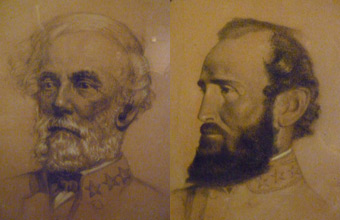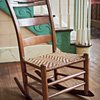
Walking a Fine Line


Robert Loftin Newman. Robert E. Lee and Stonewall Jackson, ca.1865. Woodlawn Plantation, National Trust for Historic Preservation.
Professional artists dependent upon wealthy patrons risked losing business as a result of partisan attitudes. Some left Tennessee, moving either north or further south to avoid having to take sides publicly. Thomas Waterman Wood moved to Louisville in neutral Kentucky. Washington Cooper and his family were forced into a small portion of their home in Nashville after Union soldiers requisitioned it for hospital use. His brother William moved north to Henderson, Kentucky. Many who stayed toed the line of neutrality, like painter-photographer George Dury and photographer Carl Giers. Some put their careers on hold.
Transplanted Virginian Robert Loftin Newman entered the Confederate quartermaster corps when his request to take part as a war artist was denied. In East Tennessee, several members of a community of activist pottery makers risked their lives to try and save the Union, in part by burning railroad bridges essential to Confederate occupation.

Stories
Christopher Haun produced finely crafted lead-glazed earthenware in East Tennessee. He was convicted of bridge burning and executed as a Union sympathizer.
Scottish-born artist James Cameron moved to Chattanooga from Nashville sometime in the 1850s at the behest of Colonel James Anderson Whiteside.




